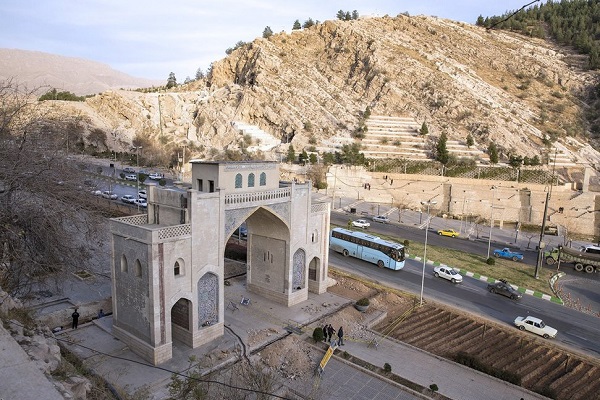Quran Gate in Iran’s Southern City Being Restored

Called Darvazeh Quran in Farsi, the monument was initially built in the 18th century during the rule of the Zand dynasty. For times it sustained lots of damages while receiving renewals, during one of which a hand-written copy of the Holy Quran was embedded at a small room on its top.
Traditionally, the majority of travelers opt to pass underneath the gate as they believe to receive blessings from the Holy Book before undertaking any journey.
However, the gate succumbed to several multiple quakes during the Qajar era (1785 to 1925). The structure, as what is seen currently, dates from the mid-2000s, according to the Tehran Times.
At the moment, the gate adjacent to the popular Khajou Kermani park and mausoleum attracts hundreds of travelers and locals to its peaceful atmosphere.



